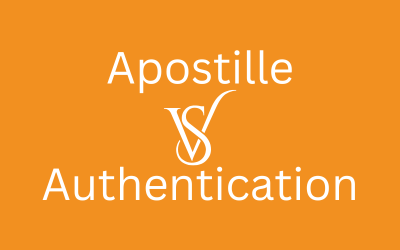As a 501(c)(3) nonprofit, an organization does not have to pay federal income tax on its profits related to its business purpose. That’s an important advantage as it allows organizations to keep more of their profits and use them to further their causes. However, if a nonprofit organization fails to file the required reports and 990 series returns to the IRS, the IRS will revoke 501(c)(3) status. This revocation will negatively impact the nonprofit in multiple ways.
Fortunately, the IRS does provide a path for nonprofit organizers to reinstate their revoked 501(c)(3) status. In this article, I’ll explain why the IRS might revoke a 501(c)(3) and how a nonprofit can return itself to tax-exempt status.
Why the IRS Might Revoke 501(c)(3) Status
The IRS will automatically revoke an organization’s 501(c)(3) status if it did not file its required 990 series returns (IRS Forms 990, 990-EZ, 990-N, or 990-PF) or notices for three consecutive years. An organization that gets reinstated risks losing its tax-exempt status repeatedly if it again fails to file the required returns for three consecutive years from the year that the IRS approved the reinstatement application.
Another possible reason why nonprofits may have their status revoked is if engage in activities forbidden as a 501(c)(3) organization. Examples of this might include contributing to candidates in political campaigns or earning too much income from activities unrelated to the organization’s exempt purpose.
Ramifications of Losing Your 501(c)(3) Status
The obvious implication of losing 501(c)(3) status is that an organization will no longer be tax-exempt and must pay income tax on its profits.
However, that’s not the only negative effect!
- Revocation can also mean the nonprofit will no longer be eligible for grants from foundations and government agencies.
- The organization can lose the authorization to collect tax-deductible donations from individuals and businesses. That, in turn, hurts donors because they may not be able to use their charitable contributions to the nonprofit as tax deductions.
- The nonprofit may no longer qualify for state sales tax exemption.
Legal, tax, and financial issues can result from 501(c)(3) revocation. Therefore, it’s wise for nonprofit organizers to consider discussing their specific compliance obligations and options with an attorney and tax advisor.
IRS Process for 501(c)(3) Reinstatement
If an organization has had its 501(c)(3) status automatically revoked and wishes to have it reinstated, it must file an application for exemption from the revocation and pay a fee.
Usually, the IRS will make reinstatement effective on the date that the organization submits its exemption application. However, organizations may request that reinstatement be retroactive to the effective date of revocation — which, in effect, is as though there was no revocation. The IRS will grant a retroactive effective date only under certain circumstances. If a 501(c)(3) organization’s responsible parties intentionally did not file its 990 series forms, or had otherwise purposely gone against the IRS’s rules, the IRS may deny a retroactive exemption.
Steps for Reinstatement
The typical steps that an organization must follow to regain tax exemption from the IRS include:
- Prepare a cover letter to the IRS.
- Create a Reasonable Cause Statement, if seeking retroactive reinstatement.
- Complete the appropriate Form 990 for all taxable years not previously filed.
- Complete IRS Form 1023 (Application for Recognition of Exemption Under Section 501(c)(3)) and include all required attachments.
- Submit all of the above with a check payable to the United States Treasury for any applicable fees.
Understanding the Reasonable Cause Statement
A reasonable cause statement explains why an organization failed to file its required forms to the IRS. It demonstrates that the organization used “ordinary business care and prudence” in understanding and attempting to comply with its reporting requirements. In its statement, a nonprofit should provide all of the facts and a detailed description of the circumstances related to:
- Why it failed to file,
- How it discovered the failure, and
- Steps it is taking (or will take) to avoid future failures to file.
Four Reinstatement Procedures
The IRS offers four different reinstatement options. An organization’s circumstances will determine which of them it may be eligible for. Below, I’ve detailed some of the information that the IRS shares about reinstating tax-exempt status. You can find other specifics on the IRS website. Nonprofit organizers should follow the IRS’s instructions carefully and provide all information required. If the IRS determines the organization has fulfilled the compliance responsibilities necessary to again qualify for tax-exempt status, it will issue a new 501(c)(3) determination letter with the applicable effective date.
1. Streamlined Retroactive Reinstatement
This option is available to organizations eligible to file Form 990-EZ or 990-N for the three years that caused their revocation. If approved, it retroactively reinstates tax-exempt status to the date of revocation.
To qualify for streamlined retroactive reinstatement, the organization must:
- Have not had their tax-exempt status automatically revoked in the past.
- Complete and submit Form 1023 (or Form 1023-EZ) with the user fee of $600 (or $275 for Form 1023-EZ) no later than 15 months after the later of:
- The date on the organization’s Revocation Letter (CP-120A), or
- The date the IRS added the organization to its Revocation List (on the IRS website).
With the approval of reinstatement — and provided the 501(c)(3) completes and executes its 990 forms for the three consecutive years it missed — the IRS will not impose additional penalties for failure to file annual returns in those taxable years.
2. Retroactive Reinstatement Process (for filings within 15 months of revocation)
Organizations that previously had their 501(c)(3) status revoked or those required to file Form 990 or Form 990-PF for any of the three years that caused revocation cannot use the streamlined procedure. Instead, they may request retroactive reinstatement using the following process if they complete their filing within 15 months of when their tax-exempt status was revoked.
- Complete and submit Form 1023 (checking the box on Schedule E for Section 5 when submitting Form 1023 electronically), and pay the $600 user fee no later than 15 months after the later of:
- The date on the organization’s revocation letter (CP-120A), or
- The date the IRS added the organization to its Revocation List (on the IRS website).
- Include a Reasonable Cause Statement to explain the organization’s reasons for its failure to file its annual return for at least one of the three consecutive years that resulted in revocation.
- File completed paper annual returns for the three consecutive years that caused the revocation and any following years.
- Include a statement to confirm that the organization has filed its required returns for those three years (and any other taxable years after that if failure to file occurred).
3. Retroactive Reinstatement Process (for filings after 15 months of revocation)
This process is for organizations that apply for reinstatement more than 15 months after the later of:
- The date on the organization’s revocation letter (CP-120A), or
- The date the organization was added to the IRS website’s Revocation List.
They must satisfy all of the IRS’s requirements for organizations filing for reinstatement within 15 months. However, there’s one critical difference: the organization’s reasonable cause statement must detail its reasonable cause for failure to file a required annual return for all three consecutive years in which it failed to file.
Another difference is that they should check the box on Schedule E for Section 6 when submitting Form 1023 electronically.
If the IRS approves the retroactive reinstatement, it will not impose additional penalties on the organization for failure to file its returns for the three consecutive taxable years that caused the revocation.
4. Post-Mark Date Reinstatement
Another option is to request reinstatement effective on the post-marked date of the organization’s reinstatement application. To do so, the organization must complete and submit Form 1023 or Form 1023-EZ (checking the box for Section 7 in Schedule E on Form 1023 or Part V on Form 1023-EZ) with the appropriate user fee.
We Can Help Reinstate Your 501(c)(3) Status
If your nonprofit has lost its 501(c)(3) status and needs to reinstate it, timeliness and accuracy are mission-critical. The process may seem confusing and cumbersome, but fortunately, my team at CorpNet is here to help.
We assist nonprofit organizations throughout the country in preparing and submitting their requests for 501(c)(3) reinstatement with the IRS. Our filing experts understand tax-exemption forms and the processes inside and out, so you can have peace of mind that your 501(c)(3) paperwork will be completed accurately and promptly. You can also count on us to handle the state compliance filings needed to keep your nonprofit in good standing.
Contact us today to learn more about our nonprofit business filing services!
Sources and References:
Reinstatement of Tax-Exempt Status after Automatic Revocation. Accessed August 28, 2021. https://www.irs.gov/charities-non-profits/reinstatement-of-tax-exempt-status-after-automatic-revocation
The Restriction of Political Campaign Intervention by Section 501(c)(3) Tax-Exempt Organizations. Accessed August 28, 2021. https://www.irs.gov/charities-non-profits/charitable-organizations/the-restriction-of-political-campaign-intervention-by-section-501c3-tax-exempt-organizations
Automatic Revocation – How to Have Your Tax-Exempt Status Reinstated. Accessed August 27, 2021. https://www.irs.gov/charities-non-profits/charitable-organizations/automatic-revocation-how-to-have-your-tax-exempt-status-reinstated
Form 1023 and 1023-EZ: Amount of User Fee. https://www.irs.gov/charities-non-profits/form-1023-and-1023-ez-amount-of-user-fee





